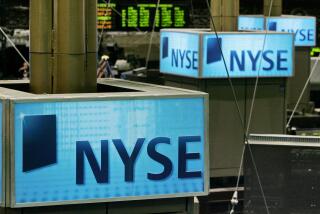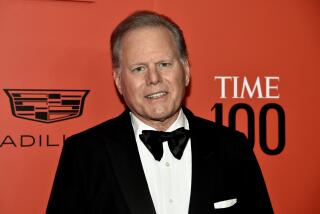More Companies Raise Dividend Payments
- Share via
When Caterpillar Inc. raised its quarterly dividend by 14% last month, the construction equipment maker was among a growing number of U.S. companies making similar moves.
After five years of earnings gains averaging 17% and dividend growth of just 3%, companies are finally boosting the size of the checks they cut investors every three months.
In this year’s first half, 1,154 companies raised their dividends, more than at any time since the first six months of 1981, according to Standard & Poor’s Corp. And companies are on track to raise payouts by 6% this year, the most since 1990.
“Some uptick in the rate of dividends is to be expected and is long overdue,” said David Zimansky, money manager of the $153-million American National Income Fund in Galveston, Texas. “The lag between dividend increases and earnings is just enormous, so you’d expect to see some closing of the gap.”
Dividends are growing along with the healthy economy, now in its sixth year of expansion. Caterpillar, for instance, forecast that this year’s sales will match or slightly exceed last year’s, and said the higher dividend reflected confidence about its financial future.
That’s a view shared by many. The number of companies boosting dividends in the first half of the year was 17% higher than in the same period of 1995, S & P said. In June, traditionally a slow month for dividend increases, 132 companies raised their payouts, the most in any June since 1983 and 22% higher than last year.
Companies that raised dividends in recent weeks included chemical and air-bag maker Morton International Inc., newspaper publisher Knight-Ridder Inc., Great Lakes Chemical Corp. and farm seed developer Pioneer Hi-Bred International Inc.
Directors have to be more confident about their company’s earnings outlook to increase the amount of money they pay shareholders. The last thing executives want is to raise a dividend one year only to cut it a year or two later when the economy slumps.
To justify an increase, executives have to think their profits have permanently risen to a higher level, especially at “cyclical” companies such as Peoria, Ill.-based Caterpillar, whose earnings rise and fall with swings in the economy.
Manufacturers and other cyclical companies are showing “more long-term optimism,” Zimansky said. Compared with the booms and busts during the Vietnam War and Arab oil embargoes in the 1960s and 1970s, “there has been more stability and consistency in earnings over the past 10 years.”
Recessions in 1973-74 and 1980-81 brought “much more violent dips in the business cycle” than what investors saw in the early 1990s, he said.
More to Read
Inside the business of entertainment
The Wide Shot brings you news, analysis and insights on everything from streaming wars to production — and what it all means for the future.
You may occasionally receive promotional content from the Los Angeles Times.










